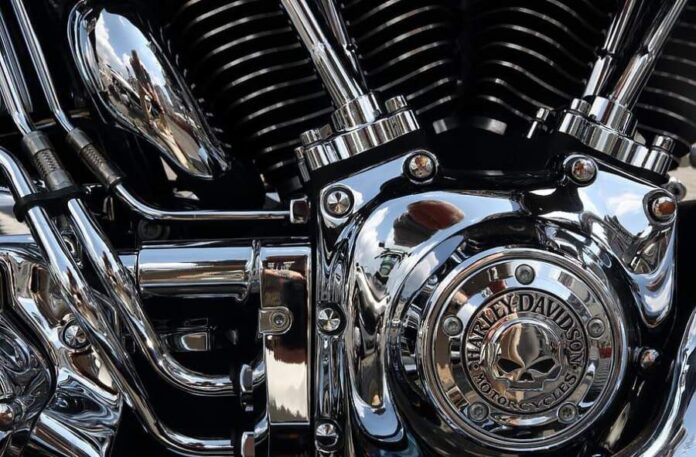Motorcycles, like any other motorized vehicle, require engine oil to run smoothly and efficiently. Since motorcycle engines need a different type of lubrication than other vehicles, it is advised that you use motorcycle-specific engine oil.
There are many different types of engine oil on the market today, and while it may seem daunting to sort through all of them, selecting the appropriate engine oil for your motorbike doesn’t have to be difficult. Here, we will go through all the steps needed to help you choose the best engine oil for your motorcycle.
Consider the Types of Engine Oil on the Market for Your Motorcycle
There have been occasions when the manufacturers and varieties of motor oils available on the shelf have confused and overwhelmed us. Each oil has a different purpose and has different grades, which dictate the viscosity and temperature levels that the lubricant can tolerate without losing its position. The engine oil for your motorcycle can be divided into the following three categories.
-
Mineral Oils
As the name suggests, mineral oils are naturally occurring kinds of crude oil that manufacturers employ as the typical lubrication oil. For the first few miles, they offer great protection for new engines, particularly for bikes with small engine capacities (80cc -125cc) and low mechanical capabilities. Under severe conditions, the composition of these oils prohibits the molecules from sticking together.
Due to these reasons, this type of oil is less efficient and must be replenished more often than synthetic oils. While they are among the most cost-effective, they do not last long and any excessive stress on the engine or aggressive riding tactics will cause components to wear out sooner.
-
Semi-Synthetic Oil
Semi-synthetic oils are more flexible lubricants that can help maintain many motorbike engines operating smoothly by offering a fine balance between the natural mineral oil and the chemically-based makeup of synthetic oils.
These oils, on average, will have 30% of their content chemically induced to help your motorbike run effectively and cleanly for even brief spurts of spirited riding.
Semi-synthetic oils have improved over time as technology has progressed. It is more common for motorbikes to replace their mineral oils with semi-synthetic ones after a few thousand kilometers on the road. Semi-synthetic oil is commonly included with motorbikes with engines ranging from 125cc to 180cc.
-
Synthetic Oils
Synthetic oils have a low viscosity index, so anyone with a motorbike larger than 200cc should contemplate using them. Synthetic oils, unlike mineral oils, are completely created in laboratories and only contain mineral oil as an addition. These oils are super lubricants and have high-temperature resistance. They operate best even when the engine is subjected to higher amounts of stress.
Even if you blow a full tank of gas every day or live in a region with harsh climatic conditions, synthetic oils will last longer and provide superior protection to the engine.
Synthetic oils will be standard on high-performance machines and trail motorcycles. However, these are fairly costly to replace, but it’s a tiny amount to pay to keep your high-performance machine running smoothly.
Consider Viscosity
The viscosity of an oil is measured by an index that reflects its thickness. The viscosity of the oil determines how thick it is. The most crucial physical property to check for when picking an engine oil is viscosity, which impacts your engine’s overall performance.
The viscosity of the oil protects the internal parts of your engine from colliding. Oil must lubricate not just the engine but also the shift and gears, particularly on motorbikes with wet clutch. The gears within the gearbox will rub against each other if the viscosity is too low, resulting in higher oil temperature, less efficient gear safety, and excessive wear.
On the other hand, oil with excessively high viscosity may take longer to reach the cylinder walls and damage critical components. Because viscosity is such a significant component in engine oil selection, other considerations such as environment and riding style must also be taken into account.
Each motorcycle’s manufacturer will usually specify which viscosity range will best fulfill the motorcycle’s requirements. Therefore, it’s critical that you stick to the manufacturer’s recommendations.
Consider Engine Oil Grades
You’ve probably seen oil cans with a series of letters and numbers printed on them, such as 1040 motorbike oil, 5w40 oil, and so on. Although it is a popular misperception that these numbers indicate temperature, they are not actual temperatures.
To begin, the W denotes winter, and the number preceding it denotes the viscosity index. The lower this value is, the better the lubricant is for engines that need to start cold or in the wintertime.
The number after the W is a measure of how well the oil can tolerate its qualities. The greater the number, the better the oil’s ability to maintain consistency at elevated temperatures. These viscosity numbers are only indicative and have no real meaning.
Consider Factory Recommendation
It’s advisable to stick to the manufacturer’s recommended grade of oil because the manufacturers will have taken into account all of the vehicle’s capacities in the real world. Many riders feel that you should continue with the suggested grade for a minimum of six oil changes. Then, based on how often and how far you ride, clear the engine and use a lubricant that best meets your requirements.
Final Word
As you can see, there are numerous factors to consider when choosing engine oil for your motorcycle. By going through the steps detailed above, you will stand a good chance of finding the most appropriate or the best engine oil for your motorcycle.



































































